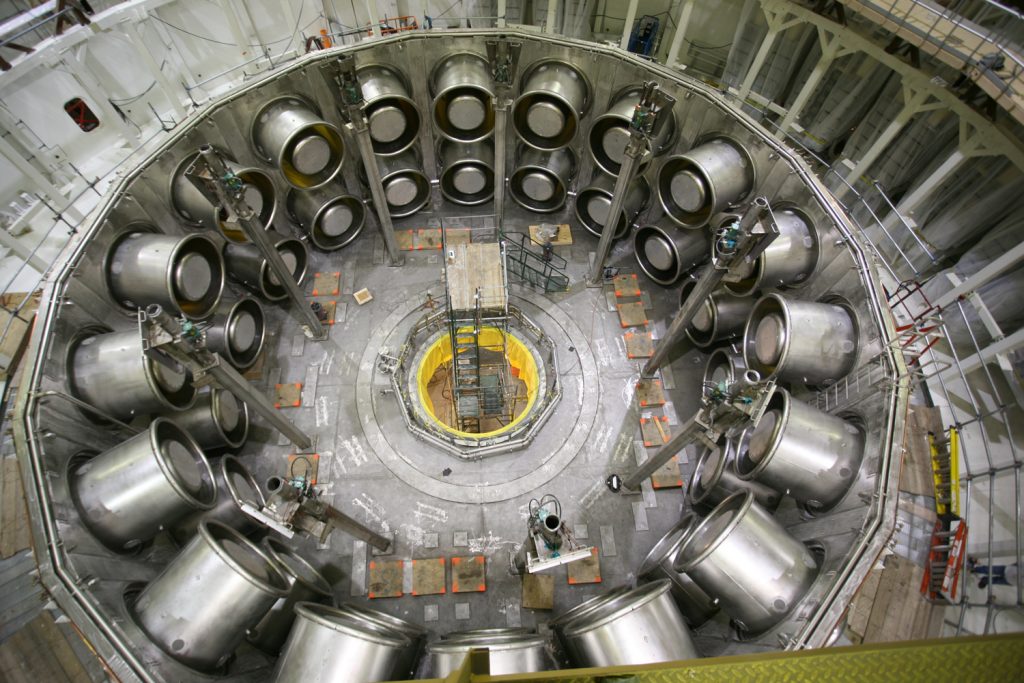
ALBUQUERQUE, N.M. — Media are invited to tour Sandia National Laboratories’ newly refurbished Z machine and participate in a rededication of its premier pulsed power accelerator starting at 1 p.m. on Tuesday, Feb.19, at Sandia.
Sen. Pete Domenici, R-N.M., and Robert Smolen, deputy administrator for defense programs at the National Nuclear Security Administration, are expected to be available for interviews roughly from 1:30-2 p.m. at the site.
Media interested in attending the event Tuesday, Feb. 19, should contact Iris Aboytes, (505) 844-2282. Media are asked to meet at the Eubank contractor gate at 12:45 p.m.
(News media who have never been to Sandia must furnish their date of birth and Social Security numbers, as well as media affiliation.)
Smolen directs the nation’s stockpile stewardship program, which is responsible for maintaining the safety, security, and reliability of the nation’s stockpile of nuclear weapons.
Brief formal talks will be given from 2 p.m. to 3 p.m. by Domenici, Sandia and DOE officials, and representatives from other Congressional offices. Media are invited either to stay for the ceremony or leave after the earlier tour concludes.
Z’s upgrade, which replaced 20-year-old equipment, has enabled the powerful machine to increase its output current from 18 million amperes to 26 million amperes for a few billionths of a second. For perspective, a 120-watt light bulb uses one ampere.
Why is this power increase necessary?
Sandia’s Z machine has already melted diamond, shot tiny plates faster than the Earth moves through space, and daily reached the temperature of the sun. It also has created temperature and pressures that have allowed astronomers to better estimate aspects of the core of Jupiter, the surface of Neptune, and the X-ray patterns around black holes in space.
Its major tasks have been:
- The data from its firings are used in supercomputer simulations to simulate the effect of nuclear weapons — a capability that has put off the day of the actual testing of nuclear weapons.
- Fusion neutrons from its firings could make the Z-pinch method a candidate for creating unlimited electrical power from the most common substance on Earth, seawater, in a process called nuclear fusion. It would not require the mining of coal or extraction of gas or uranium from the Earth.
The new upgrade will provide energies closer to those needed for the two objectives, and will provide hard data for researchers to test their theories as to what effect more energies applied to a target will actually have.


